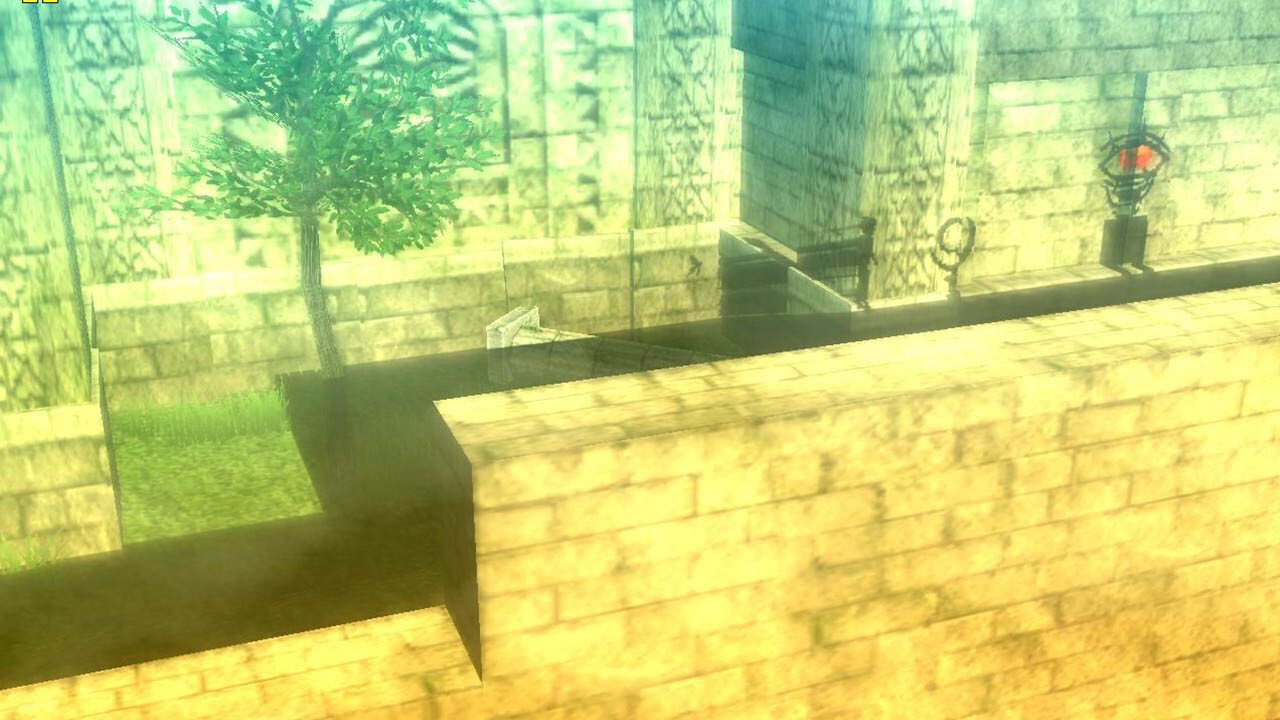Before I started writing this review, I spent about ten minutes trying to figure out whether or not a spoiler warning was needed at the beginning. It’s almost impossible to give an accurate impression of Lost in Shadow without mentioning some of the end-game content, and some of the things that happen are certainly unexpected.
Then I remembered that the startling moments are the result of shockingly bad pacing instead of narrative suspense, so I decided to press forward unimpeded. Let’s begin.
In Lost in Shadow, you play as the severed shadow of a boy climbing a tower in hopes of finding his real body. It’s basically a cross between Peter Pan and Limbo, with a story that is entirely contained within a half-dozen text screens and a plot with zero twists or surprises.
So why the spoiler warning? Well, Lost in Shadow simply refuses to end, to the point that you’ll have to play the first third of the game twice in order to make it to the credits. Every time you think you’ve reached a logical conclusion, the developers skip past it and artificially prolong the narrative with an utterly transparent attempt to pad playtime, and while it may seem ungrateful to complain about having more game, Lost in Shadow just doesn’t do enough to merit its length.
It’s unfortunate, because the game is not without its merits. Since you’re nothing more than a shadow, you exist in a world of shadows, and the concept lends itself to some interesting gameplay ideas. The projected landscape changes whenever objects move in the real world, so pulling levers will activate machinery and open paths that were previously non-existent. You have a fairy companion named Spangle to help you manipulate the objects in the tower and it’s fun to see how disconnected platforms combine to make solid shadow terrain.
The problem is that the developers seldom capitalize on that latent potential, opting instead to undermine their own premise. You’ll often be able to look at the physical world and figure out the exact configuration of the shadows – metal gates, for instance, usually have a one-to-one correspondence to shadow gates – so the fact that everything is in profile has absolutely no impact on the gameplay.
If anything, the shadow gimmick only makes things more confusing. Objects and haze in the foreground will frequently obscure the background and the game can be a bit whimsical with regards to what counts as a shadow. The runners that hold spinning blade traps are intangible and you’ll fall right through them as if they weren’t there, but there’s no way to distinguish them from the platforms that you’re supposed to walk on until you try to land.
That kind of ‘leap of faith’ gameplay is prevalent throughout Lost in Shadow. There are segments called Shadow Corridors that allow you to rotate a 3D stage to change the 2D perspective, but if you rotate the stage in the wrong direction, your character will be squished and you’ll have to do it again. While there’s no punishment for getting it wrong, there’s also no way to tell which way is right, so trial and error is the only problem solving technique that matters.
That’s true of almost every single obstacle, since the developers understand the concept of a difficulty curve but don’t have any grasp of intrigue. Later levels are tougher simply because the jumps are longer and the monsters are more powerful, and the challenges could best be described as speed bumps instead of puzzles.
The game’s massive overreliance on mediocre combat – and I can’t stress that part enough – is further evidence of the developer’s nearly complete dearth of clever ideas. There are spiders everywhere, as well as a pointless RPG level-up mechanic that makes your attacks more powerful, and at least half of the game is little more than pest control.
What’s strange is that the game tries to mask the linear ‘go here, hit this’ progression with detours and pseudo-intricate level design. Sadly, there’s always one way forward – and only one way forward – so trying a different path and getting it wrong does nothing but add a few extra minutes to play time.
Lost in Shadow ultimately feels like a game that was designed by the art director with minimal input from the programmers. The camera constantly zooms in and out in order to show of the scenery, and the physics seem to fluctuate just as much as the shadows. It’s virtually impossible to gauge distance on jumps because your leaping ability is never consistent, and you’ll lose a lot of health to enemies that are just out of range of your sword.
In spite of everything, Lost in Shadow is not an awful game, or even a particularly bad game. It’s not broken and it can be strangely absorbing. I’ll also admit that my deadline could have colored my opinion, insofar as the arbitrary gameplay extensions become far more aggravating when you’re pressed for time.
Even so, Lost in Shadow clearly has aspirations of artistry, so the lack of innovation is a rather significant flaw and the atrocious pacing makes the problems all the more noticeable. Five hours into the game, you’ll pick up a new sword that allows you to walk through light gates and enter the real, 3D world for a brief time. You can use this new ability to push blocks and make new shadows, and it’s easily the coolest mechanic in the game.
There’s just no reason to withhold that power at the start, and the delay becomes an excuse to force you to replay levels you’ve already completed. It makes Lost in Shadow more exasperating than enjoyable, and the game could stand to be a full five or six hours shorter. Lost in Shadow may present itself as something profound, but the reality is that it’s a wholly conventional 2D platformer with no distinguishing features beyond a visually arresting style. Limbo is better, and measured against that standard, Lost in Shadow falls well short of expectations.




